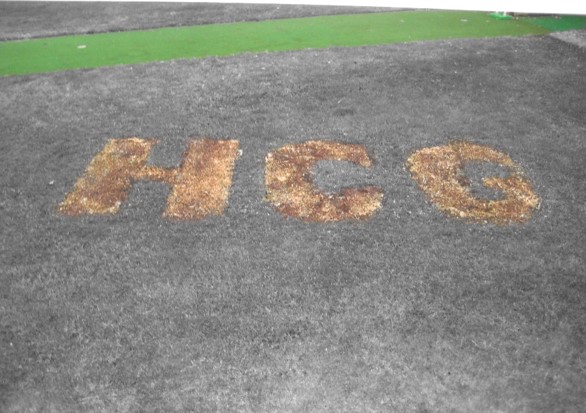
0 Followers
I’m the coach of an under 16 school team and would like to get some advice about the best way to break down the team chasing say 100 runs to win a one-day game with 15 overs to go in the innings. The players seem to get caught wanting to play big shots and we often fall 30 or 40 runs short. Any help would be great
Partner Sponsors
Responses
Hi...
15 Overs = 90 balls. (So 100 runs off 90 balls)
It's a singles game. Boundaries will naturally come.
The problem is dot balls, which are then perceived as not good, building the pressure... resulting in big shots to catch up.
If this was my team, I would spend some time creating mini-games in practice to develop the skills and love of rotating the strike. A lot of young cricketers try to play highlights cricket. (664664) We know well enough it is not how the game works.
I would also look to get them to experience falling behind in run rates, and catching up with low risk cricket... ie, hitting pockets for 2's.
I suppose there could be many ways to break down the target, this would be my starting point.
Totally agree with Jody.
Just add a concept that has shown some success in our school cricket.
We need 9 runs off one over. What is the best way to do it? Without a plan or being experienced enough to recognise the moment, the batter will probably try to slog. (school cricket)
We have a mantra that practice - hitting the ball well. If I hit six balls well in an over, (i.e., where they should be hit but with real purpose and intent to score) I have my best chance of scoring off each ball, best chance of hitting a multiple and indeed my best chance of hitting a boundary.
We practice trusting the process. Sometimes you may be one run off three balls and panic. You need to stay with the process. If you need 8 runs off 3 balls, your best chance is to hit the 3 balls as well as you can.
There is almost always a better result when the batter strikes the ball well, out of the middle and towards the area of the field where that ball could be struck well.
The rider is that if the bowler happens to hit their target with a perfect yorker or the like, you were probably not hitting that ball with a slog anyway. "The opposition is allowed to bowl well"
Hope this makes sense and helps. It has been good for our players.
Always a tough task in teenage cricket, chasing a total, sometimes 50 in 100 balls is diifficult.
I coached a year 10 school side, (15 and 16 year olds) side this season and we won 6 games batting second, with the best chase 228 off 40 overs, we had 2 overs spare in that win.
A few things that we emphasised in training that I found effective were:
Set your target to win with an over to spare, so your 100 in 15 is really a 100 off 14. Somewhere in the chase you will have at least one over of low scoring so stay in front of your target score. Try not to get to the last over if possible, then if the game does come to the last over you only be needing 1 to 3 runs instead of 8-10.
Running between wickets is the king, must be aggressive with their backing up and there is a 1 from most throws from the boundary (depending on field size).Singles within the 30 meter circle are best achieved with soft hitting, get the dominant hitter on strike as much as possible.
Train hitting the ball over the head of the fielders in the circle, this gets 2 or a 4 runs, risks are a necessity so hitting it continually straight to the fielder in the deep for 1 is not productive enough because there will be dot balls.
Practice hitting bombs, the kids love it! We often had long hitting contest, but use a variety of shots so they hitting to all parts of the ground. Bad balls should be hit for 4 or 6. If it is fun at training and a challenge the players really take it to task and it builds a positive mind set.
Develop a full array of shots for the players, reverse sweeps, ramps etc again I find they like the challenge also they are standard shots now, so they should learn the skills. Scoring boundaries between mid-off and point is a great skill to have and it makes the opposition field placement much more difficult, practice hitting it hard in that area.
Each player must know what their strengths are in a run chase, (teenage boys need constant reminders of this), it makes their task simpler when they get to the crease. Keep re-enforcing where their 1 zone, 2 zone and boundary zones are on the field. Play to those limits.
The scoreboard needs updating every over, not sure why but they are not great at this. In coming batsman must know the rate needed when they arrive at the crease.
Finally it really helps if you have a good player with a level head that control things, they aren't in every side though.
Hope this helps in some way for you.
I agree 100% with Jody, Bryan and Trent and their quality advice.
To add a further thought to the 100 runs off 15 overs. If you challenge the batters by asking, how many boundaries (4s) do we think we could hit off 90 balls.
If for example the answer is 8 boundaries, that’s 32 runs. So, the run chase could hypothetically be 68 runs off 82 balls or using Trent’s advice of aiming to score the runs with an over to spare, 68 runs off 76 balls.
Therefore, in the minds of the youngsters (perhaps all of us) the chase doesn’t seem too insurmountable and gets them to focus on running hard between wickets and working the ball to score singles and two’s. It may deliver the batters the confidence of not having to play unnecessary big shots and throw their wickets away.
As Trent quite rightly pointed out running between wickets is so important. Scoring one’s and two’s regularly will frustrate the bowlers and potentially lead to them bowling more than the 8 bad balls which can be put away to the boundary.
It’s so important the team sit together so each player can see what’s happening and required for their team to win.
Great question Stuart and well done on looking after the players and the team. Best of luck.
100 runs off 15 overs = 6.6 runs per over. There will always be a loose ball every over, and this should be the boundary ball. That covers 4 runs per over. The other 5 deliveries will provide the balance if you work the singles and twos, running well between wickets.
Some overs you will find less runs than this, (when the bowler is "on" for a while), while other overs more when you get 2 or more loose deliveries. It usually balances out, which will make winning with a 6 - 7 over run rate quite achievable.
The other key point is patience. Don't panic when the loose deliveries don't come, because they will come later, and you will then catch up the rate, without panicking and "going the slog" and risking your wicket. Also check the fielding poitions for any changes that are non verbal. If you haven't got your eye in, play within the "V" until you do, while working ones and twos into the gaps. A lot of players think six runs per over is fast scoring, but it isn't as fast as you think when you break it down. It's only 1 run per ball or 3 scoring shots per over. KISS principle.
This advice was given to me at an early age by Greg Chappell, and I found it worked quite well when I played many years ago.
Hope this helps you also.











